

Hola mis lindas abejas 🐝 del panal, espero se encuentren bien. Tratando de cuidarnos lo más posible.
Acá donde vivo recrudecen las medidas de seguridad, puesto que hay muchos casos del virus y salir de casa se vuelve cada día un desafío.
Sin embargo se debe salir cada día a buscar el pan de cada día, solo pido a Dios que nos cuide y proteja de todo mal.
Hoy como siempre les quiero mostrar mi nuevo proyecto, aunque yo lo llamaría desafío. Continúen leyendo mi publicación para que descubran de que se trata.
Hello my beautiful bees 🐝 of the hive, I hope you are well. Trying to take care of us as much as possible.
Here where I live security measures are tightened, since there are many cases of the virus and leaving home becomes a challenge every day.
However, we must go out every day to look for our daily bread, I only ask God to take care of us and protect us from all evil.
Today, as always, I want to show you my new project, although I would call it a challenge. Continue reading my publication so that you can discover what it is all about.

Ya les he contado que tengo un terrible defecto: "Nunca digo que no al cliente."
Por consecuencia me veo siempre en aprietos al no saber como hacer una pieza. Gracias a Dios existe el Internet y los tutoriales en YouTube. Aunque en este caso no conseguí ni una sola ayuda en línea.
Lo cierto es que hace poco me contacto un cliente queriendo que le fabricara un pasamontañas táctico, él de hecho me trajo el que usa que era bastante básico.
Por ese me guie y me apoyé en imágenes referenciales por Internet pues antes de cortar una pieza analizo muy bien como la cortaré, ya que no me gusta perder material.
Logré con éxito y satisfacción culminar el proyecto que hoy les traigo, espero sepan apreciarlo.
I've already told you that I have a terrible defect: "I never say no to the customer."
As a result, I am always in trouble because I don't know how to make a piece. Thank God for the Internet and YouTube tutorials. Although in this case I didn't get a single online help.
The truth is that recently I was contacted by a client who wanted me to make a tactical balaclava for him, he actually brought me the one he uses which was quite basic.
That's why I was guided and supported by reference images on the Internet because before cutting a piece I analyze very well how I will cut it, since I don't like to lose material.
I achieved with success and satisfaction to culminate the project that I bring you today, I hope you appreciate it.
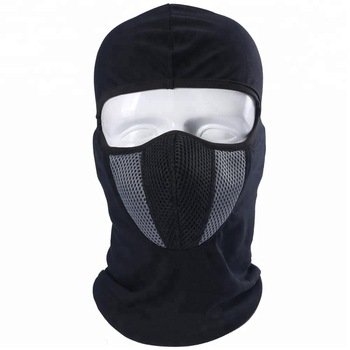

| |
| |
| |
| |
| |
| |
| |
| |

Al ser mi primera pieza de este tipo fui con calma y lo primero que hice fue usar la pieza que el cliente me dio de referencia como patrón y fui trazando en la tela con la ayuda de la tiza.
Marque dos piezas porque a petición del cliente, él quería que fuese doble.
As it was my first piece of this type I went calmly and the first thing I did was to use the piece that the client gave me as a reference as a pattern and I traced it on the fabric with the help of the chalk.
I marked two pieces because at the request of the client, he wanted it to be double.
 |  |
|---|
Para acentuar la curva que estará en la parte superior de la cabeza tome una pinza de cada lado. Solo medí 7 centímetros y con ayuda de aguja e hilo fui dándole unas puntadas previas antes de llevar a coser.
Esto me permitía ir midiéndole a mi hijo adolescente la pieza (fue mi modelo)
To accentuate the curve that will be at the top of the head, take a tweezer from each side. I only measured 7 centimeters and with the help of a needle and thread I gave it a few previous stitches before taking it to be sewn.
This allowed me to measure the piece for my teenage son (he was my model)
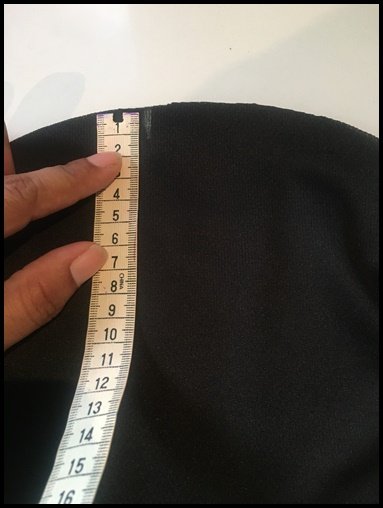 | 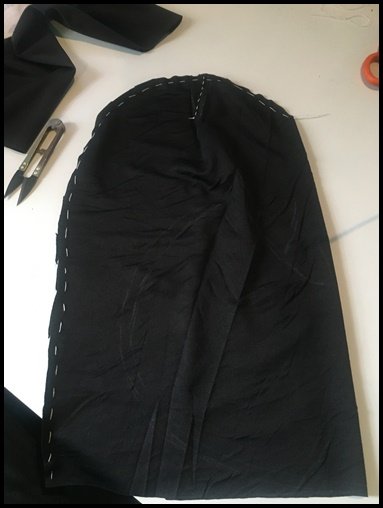 |
|---|
Ahora viene lo complicado: sacar la parte perfecta de la visión.
Saque muchos patrones en papel para ver cuál se ajustaba mejor y cuando estuve satisfecha lo probé en un trozo de retazo de la misma tela para asegurarme que quedara bien (nuevamente el modelo fue mi hijo)
Now comes the tricky part: getting the perfect part of the vision.
I took out many patterns on paper to see which one would fit best and when I was satisfied I tried it on a piece of the same fabric to make sure it fit (again the model was my son)
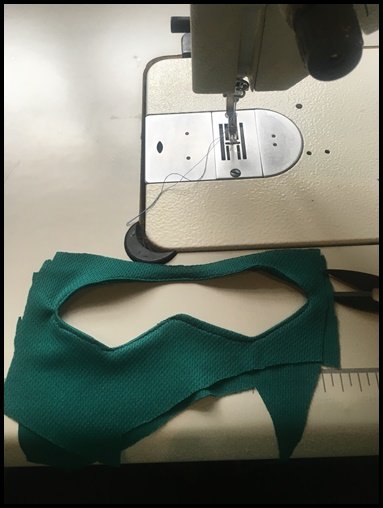
Cuando quedó perfecto, solo transferí a las dos piezas el molde.
Se debe primero hacer en un lado y cortarlo, para luego montarlo sobre la otra pieza y que queden ambos a la misma altura.
When it was perfect, I just transferred the mold to the two pieces.
First you have to make it on one side and cut it, then you have to mount it on the other piece so that both are at the same height.
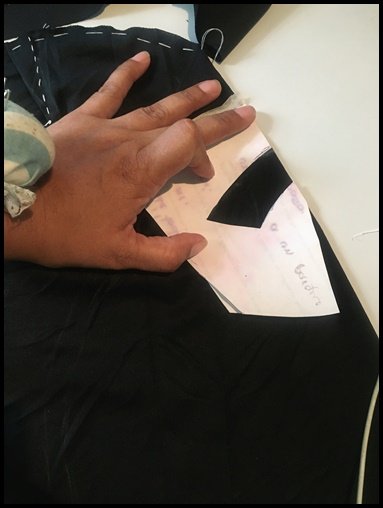 | 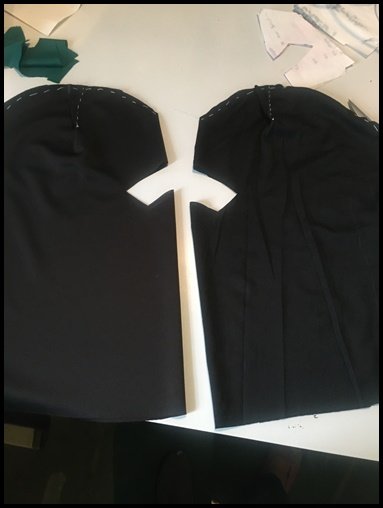 |
|---|
Al tener ambas piezas cortados solo unimos con aguja e hilo para ayudarnos a que quede perfecta.
¿Por qué no usar alfileres? Por lo general me ayudo con alfileres pero en esa oportunidad debí hacerlo de este modo para evitar errores. Siento que de este modo trabajo doble, pero el resultado bien vale la pena.
Posteriormente vamos a coser a la máquina. Al finalizar damos unos pequeños piquetes para que al momento de doblar la prenda no quede fruncida.
By having both pieces cut, we only join them with a needle and thread to help us make them perfect.
Why not use pins? Usually I help myself with pins but at that time I should have done it this way to avoid mistakes. I feel like I'm working twice as hard this way, but the result is well worth it.
Later we will sew on the machine. At the end we give some small pickets so that when we fold the garment it is not puckered.
 | 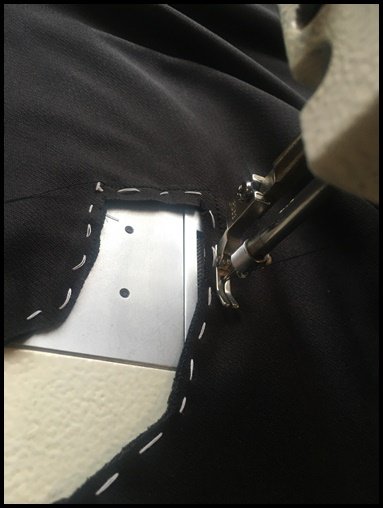 | 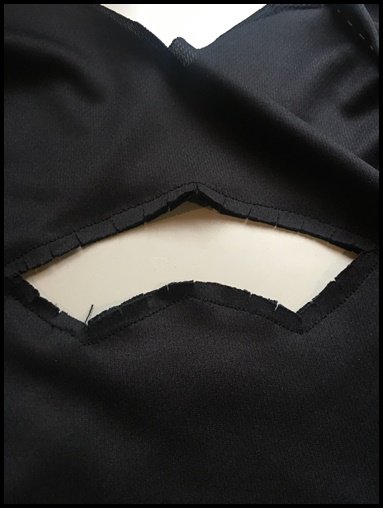 |
|---|
Es momento de coser las pinzas que tomamos al principio del proceso. Son 4 en total.
Cosemos y cortamos el excedente.
It's time to sew the tweezers we took at the beginning of the process. That's four in all.
We sew and cut the surplus.
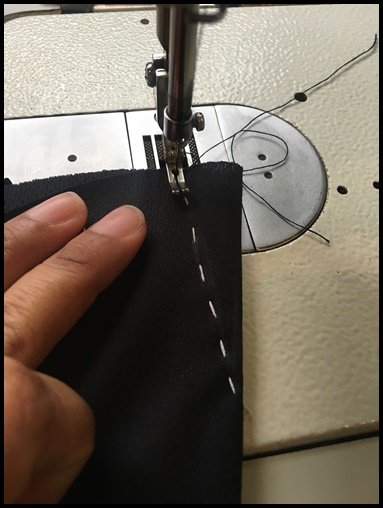
Ya para finalizar solo debemos unir ambas piezas con mucho cuidado.
Diría y abuela que para estos casos debemos usar la lógica y en esta oportunidad me toco usarla y bastante. Al final quede muy complacida con el resultado y el cliente quedo super feliz.
Finally, we just have to put the two pieces together very carefully.
I would say that for these cases we must use logic and in this opportunity I have to use it a lot. In the end I was very pleased with the result and the client was super happy.
 | 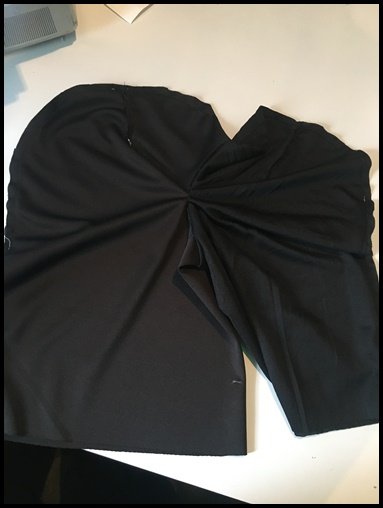 |
|---|

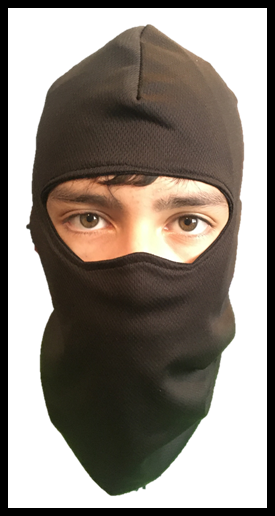


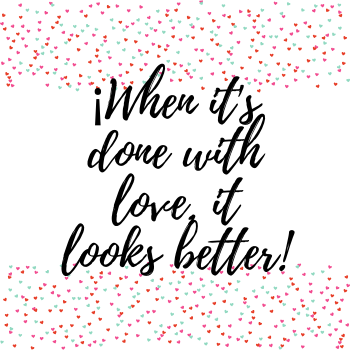

Soporte fotográfico de mi autoría, editado en PhotoScape - Canva
Photographic support of my authorship, edited in PhotoScape - Canva
That looks like a great protection! I'm so glad that we don't have to wear masks over here :)
How lucky you are, greetings.
Vaya. ! Si que tienes razón... No hay mucho contenido en la internet sobre este tipo de piezas... Hace poco yo estuve buscando, porque casualmente un cliente también quiere un balaclava. De mi parte, ni siempre digo que si; pero es tan amigo mío que me dió pena decirle que no. 😂
Sin dudas, tú tutorial me será de mucha ayuda y orientación. Gracias querida @karolines
Hola mi amor, m contenta te sirva, vamos a mano porque yo para hacerle la ropa a sobrina me guio de tus hermosas piezas. Saludos querida @pialejoana